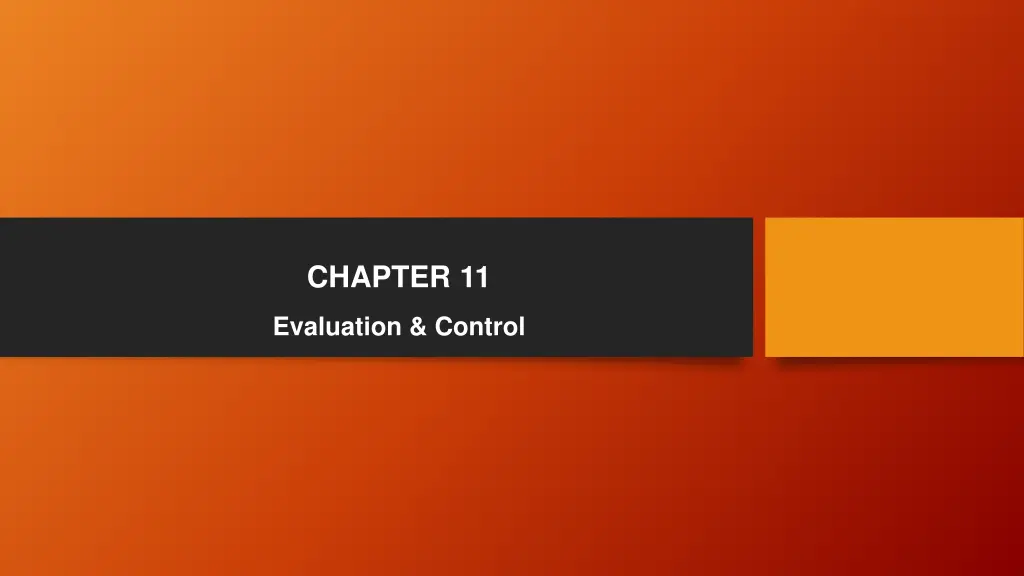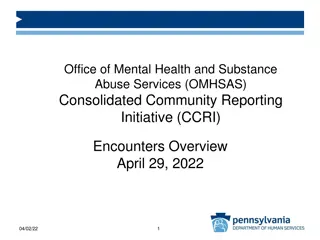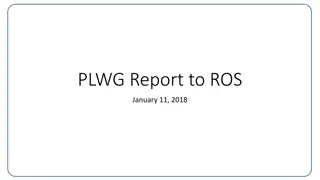
Strategic Management Evaluation and Control Process
Explore the evaluation and control process in strategic management, including steps, challenges, unexpected incentives, performance measures, and the Balanced Scorecard concept. Learn from real-world examples and understand the importance of effective evaluation strategies.
Uploaded on | 0 Views
Download Presentation

Please find below an Image/Link to download the presentation.
The content on the website is provided AS IS for your information and personal use only. It may not be sold, licensed, or shared on other websites without obtaining consent from the author. If you encounter any issues during the download, it is possible that the publisher has removed the file from their server.
You are allowed to download the files provided on this website for personal or commercial use, subject to the condition that they are used lawfully. All files are the property of their respective owners.
The content on the website is provided AS IS for your information and personal use only. It may not be sold, licensed, or shared on other websites without obtaining consent from the author.
E N D
Presentation Transcript
CHAPTER 11 Evaluation & Control
Steps of Strategic Management Process Ch. 4 & 5 Ch. 6, 7, & 8 Ch. 9 & 10 Ch. 11
Evaluating an Implemented Strategy
Failure of the control system Inappropriate goal setting Lack of capability and error in information processing An erroneous or inappropriate method of performance evaluation Too much negative feedback to employees when goals are not met
Unexpected side effect of incentive Former Soviet Union Reward taxi divers based on total miles traveled what happened? Chandelier producers Reward chandelier producers based on total volume of production (measured in kg) what happened? Lincoln Electric Reward secretaries based on number of characters typed what happened? A software company Reward programmers $20 for each software bug fixed what hanppend?
Primary Measures of Performance Traditional Financial Measures Return on investment (ROI) Earnings per share (EPS) Return on equity (ROE) Operating cash flow Free cash flow Shareholder Shareholder value Economic value added (EVA) Market value added (MVA)
Balanced Scorecard (BSC) Financial perspective How do we appear to shareholder? Customer perspective How do customers view us? Internal business perspective What must we excel at? Innovation and learning perspective Can we continue to improve and create value?
BSC: Balanced Scorecard Business Processes
Example: BSC of a Semiconductor Company Source: Kaplan, R.S. & Norton, D.P. 1992. The Balanced Scorecard-Measures That Drive Performances. Harvard Business Review, 1992, 70.
Example: BSC of a Service Company 11 Source: Kaplan, R.S. & Norton, D.P. 1992. The Balanced Scorecard-Measures That Drive Performances. Harvard Business Review, 1992, 70.
Executive Compensation Scheme based on BSC Criterion Measurement Weight Profit vs. competitors ROE vs. competitors Cost savings vs. plan Market Share growth (new market) Growth in the existing market 18.0% 18.0% 18.0% 3.0% 3.0% Financial (60%) Big customer market share Overall Customer Satisfaction Survey Satisfaction Survey of Major Customers Profitability of Customers 2.5% 2.5% 2.5% 2.5% Customer (10%) Business Processes (10%) Community/Environment Index 10.0% Employee Morale Survey Level of Strategic Competency Strategic Use of Information 10.0% 7.0% 3.0% Innovation and Learning (20%)
Relation among BSC elements Financial Perspective Customer Perspective Business Processes Innovation and Learning
Three questions on Ch. 11 1. What could be the reason for the failure of the control system? 2. Balanced Scorecard (BSC) 1) What is the purpose of BSC? 2) What is the meaning of balanced in BSC? 3. What is the relation among BSC elements?
Balanced Score Card: Southwest Airlines Think about the possible indices for each BSC component which would explain the workings of Southwest s operational excellence. In each BSC component, list at least 3 indices to track and measure the performance, and draw a diagram on how they connect together.
Connection between BSC componen ts Measurement Indices 1. 2. 3. ...... 1. 2. 3. 1. Time spent on the ground less than 30min 2. on-time departure 90% 3. 1. 2. 3. Financial perspective Customer perspective Internal Business Processes perspective Quick turnaround Learning and Growth (or, HR) perspective




